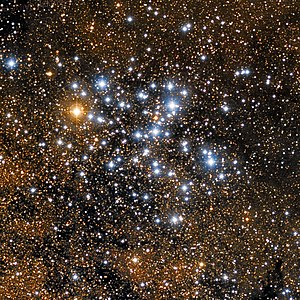M6 | NGC 6405 | Open Cluster | Scorpius | 1,600 Light Years Away
Messier 6, also known as the Butterfly Cluster or NGC 6405, is a striking open star cluster located in the constellation Scorpius. This celestial beauty was first cataloged by the Italian astronomer Giovanni Battista Hodierna in the 17th century and later independently rediscovered by Charles Messier in 1764. Messier 6 is situated at a distance of approximately 1,600 light-years from Earth and is easily visible to the naked eye in the night sky. The cluster’s name, the Butterfly Cluster, is derived from the arrangement of its stars, which resembles the wings of a butterfly.
Composed of over 200 stars, Messier 6 is a relatively young cluster, with an estimated age of around 100 million years. The stars within the Butterfly Cluster are hot and luminous, creating a visually striking and picturesque ensemble against the backdrop of space. The cluster is surrounded by a faint nebulosity, which adds to its aesthetic appeal and is often attributed to the scattering of light by interstellar dust.
Messier 6 has been a subject of interest for astronomers studying the dynamics of open star clusters and the processes involved in their formation. Observations of Messier 6 provide valuable information about the early stages of stellar evolution, the distribution of young stars, and the interstellar environment in which these celestial gatherings take shape. The Butterfly Cluster stands as a captivating example of the beauty and complexity inherent in the life cycle of stars within our Milky Way galaxy.

